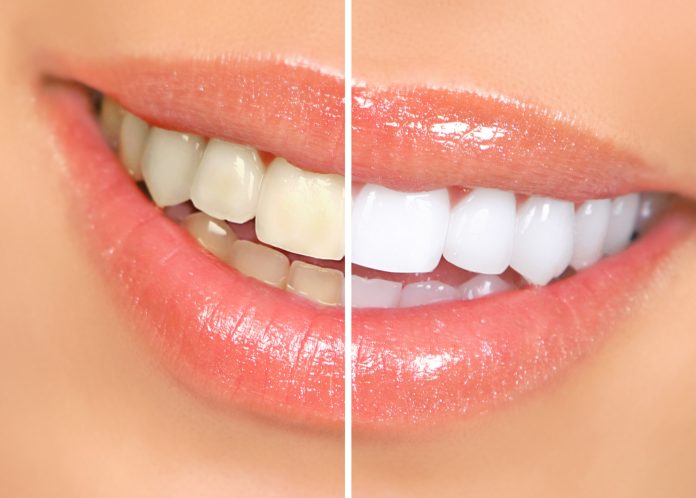Looks and aesthetics play an essential role in our contemporary society. Moreover, the way we look and portray ourselves not only affects our self-esteem but different aspects of our social life.
As a result, cosmetic treatments to improve someone’s looks have become a trend among thousands of people, and dentistry is not the exception.
From a little composite retouch to a complete smile makeover, the dentistry world possesses a wide variety of alternatives designed to cover your needs, being teeth whitening one of the most popular options.
Thereby, we will discuss in this article what teeth whitening is, how it works, and how it can help you achieve the smile you have been looking for.
Table of Contents
What is teeth whitening?
Among the many cosmetic treatments available, teeth whitening is one of the most common, performed in most dental offices every day.
During this procedure, a whitening agent removes stains from the teeth to change their colors to a lighter tone, resulting in a more harmonious and aesthetically pleasing appearance.
Teeth whitening can be done either at home using over-the-counter products or professionally at the dentist’s office. Both alternatives are capable of producing outstanding results. However, the time it takes for the effect to be noticeable drastically varies between one and the other.
Furthermore, the type of whitening agent and its concentration also plays a vital role in the effectiveness of the treatment. Although there are different whitening agents, peroxide is proven to be the most effective and common one among the whitening products.
How does teeth whitening work?
As time passes, the teeth start developing stains due to the close contact with dark pigments for prolonged periods. This changes the color of the teeth, giving them a yellow, brown, or gray tone.
Most whitening products interact with the stains to remove them chemically and restore the teeth to their original color. However, it is vital to understand that there are different stains types, and the whitening products do not act on all of them.
- Extrinsic stains:
These stains are located on the outer surface of the enamel and can be physically removed throughout a dental cleaning.
The most common reasons for these stains are plaque, tartar, and nicotine stains. Removing the yellow film that covers the teeth reveals their natural color.
- Intrinsic stains:
These stains are located within the inner layers of the teeth. The pigments penetrate the enamel and change the teeth’ color from the inside out. They can be removed with the help of a whitening agent capable of interacting with them.
Intrinsic stains are usually developed due to prolonged contact with dark pigments.
Whitening products work by eliminating the stain directly from the inside. Carbamide Peroxide and Hydrogen Peroxide are two of the most common teeth whitening agents. They can penetrate the enamel and reach the place where stains are located. This begins a chemical oxidation process that results in the elimination of the stain, changing teeth back to their natural color.
How is a professional whitening done?
The first thing to do is an evaluation of the teeth. Although the treatment is not complicated, not everyone is a good candidate for whitening. Therefore, your dentist needs to determine if you are suitable for this therapy.
Teeth whitening cannot change the color of restorations, such as composite, crowns, or veneers. Therefore, patients with restorations in a visible place are not recommended to undergo the treatment as it leaves a discrepancy between it and the tooth.
Afterward, the dentist uses a specialized color guide to show the patient their current teeth tone and the possible result, allowing him to participate and comment.
The whitening products used by the dentists are caustic to the gums due to their composition and high concentrations of peroxide. Therefore, to prevent the peroxide from leaking and hurting the gums, a protective barrier is placed following their shape and contour.
The whitening product is placed over the teeth and left to act once the barrier has been correctly set. The amount of time the whitening should be in contact with the teeth will vary depending on the shade and tone desired and the brand of the product. However, it can range from 30 minutes to 1 hour and more.
Lastly, the whitening product and the barrier are removed. And although right after removing the product, there is an evident change of color, the final result will be observed after a few days.
Teeth whitening is a simple and great way to improve the smile and enhance the look. Make sure to visit your dentist to evaluate if you’re a good candidate for this treatment and achieve the smile you have been looking for.



















